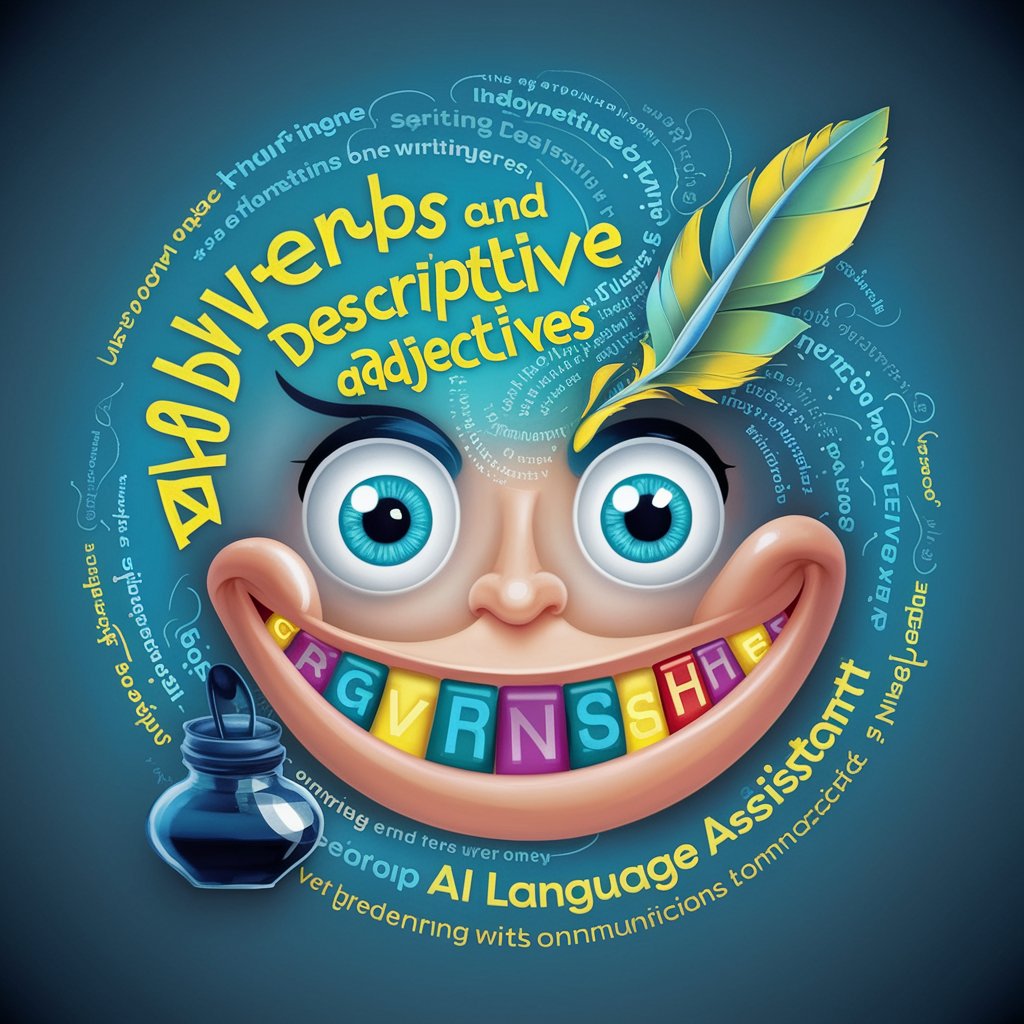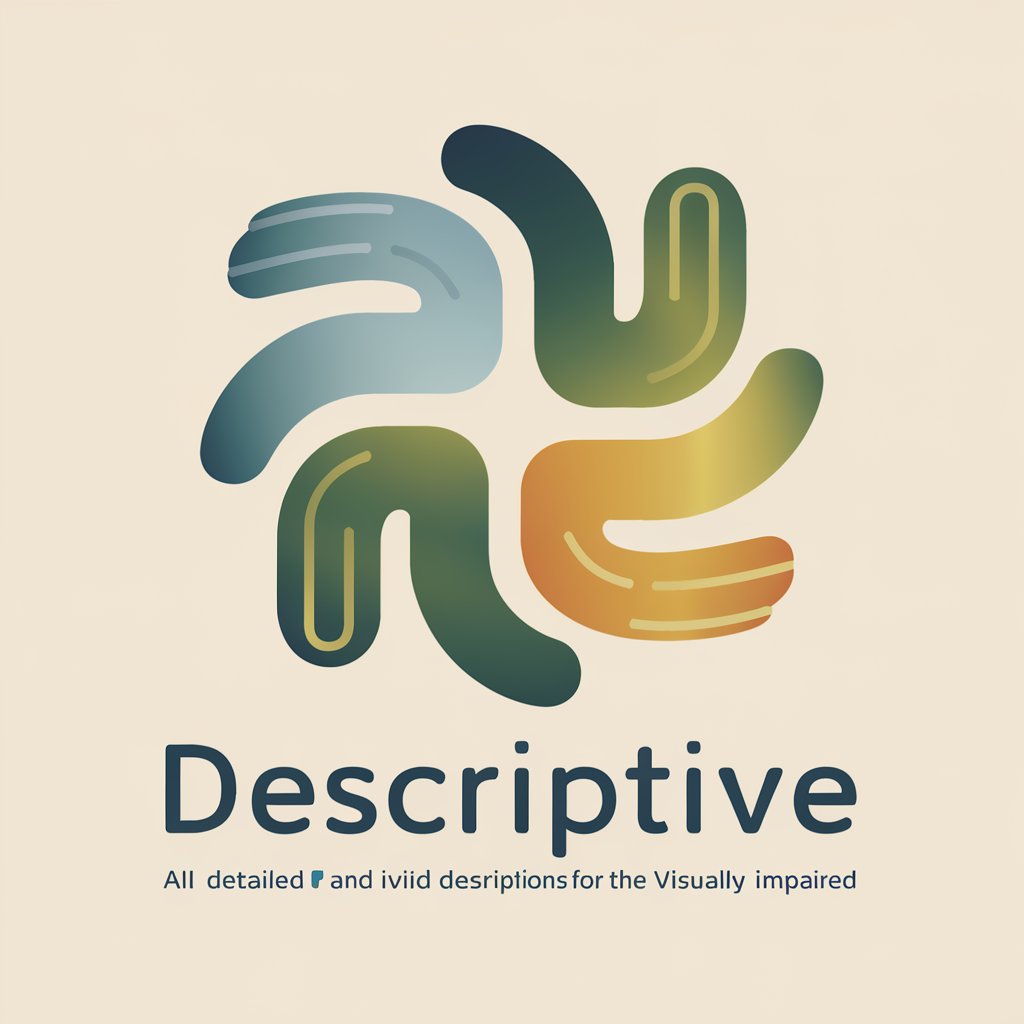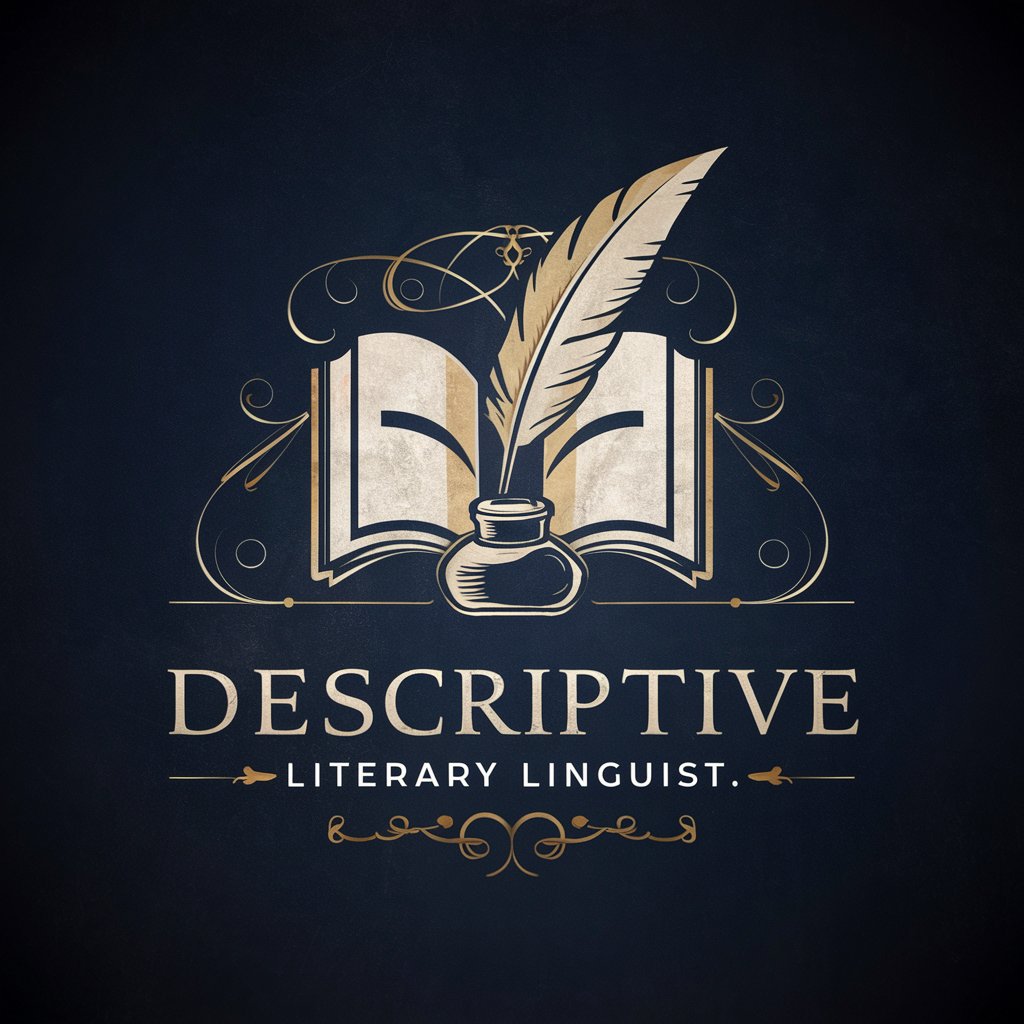Adverbs and Descriptive Adjective - Adverb & Adjective Guide

Hello! Ready to explore words together?
Enhance Your Language with AI
Can you describe how you feel when...
What are some adjectives you use when...
How would you vividly describe...
List some adverbs that explain how...
Get Embed Code
Understanding Adverbs and Descriptive Adjectives
Adverbs and Descriptive Adjective is designed to enrich communication by focusing on the nuances of adverbs and adjectives in English. This model helps users understand how different adverbs and adjectives can be used to convey emotion and detail in language more effectively. For instance, consider the difference in nuance between 'she smiled' versus 'she smiled brightly.' The addition of 'brightly' not only describes how she smiled, but also adds an element of warmth and energy to the scene, enhancing the reader's visual and emotional understanding. Powered by ChatGPT-4o。

Core Functions of Adverbs and Descriptive Adjective
Enhancement of Descriptive Language
Example
Using adverbs like 'quietly' to add subtlety to actions, as in 'he quietly entered the room,' which implies a careful, perhaps secretive action.
Scenario
In a creative writing workshop, participants use the tool to refine their narrative descriptions, making scenes more vivid and characters' actions more expressive.
Emotional Amplification
Example
Adjectives such as 'joyous' or 'mournful' not only describe states but also evoke specific feelings, as in 'the joyous crowd' or 'a mournful song.'
Scenario
In marketing, advertisers use emotionally charged adjectives to connect with audiences and evoke specific responses to products or services.
Precision in Communication
Example
Adverbs such as 'meticulously' provide precision, as in 'she meticulously organized her desk,' suggesting thoroughness and attention to detail.
Scenario
In professional settings, precise language helps in creating clear and detailed reports, presentations, or emails, ensuring that the communication is effective and leaves little room for misunderstanding.
Target User Groups for Adverbs and Descriptive Adjective
Students and Educators
Students learning English and educators teaching language arts benefit by deepening their understanding of linguistic nuances, improving both teaching methodologies and learning outcomes.
Writers and Content Creators
Writers, whether of fiction, non-fiction, or digital content, use precise adjectives and adverbs to craft more engaging and vivid narratives, enhancing reader engagement.
Marketing Professionals
Marketing professionals leverage emotionally resonant adjectives and strategically placed adverbs to create compelling advertising that targets specific emotions and encourages consumer action.

Steps for Using Adverbs and Descriptive Adjectives
Start for Free
Begin by visiting yeschat.ai for a complimentary trial that does not require a login or a ChatGPT Plus subscription.
Explore Tutorials
Familiarize yourself with basic concepts through available tutorials that explain how adverbs and adjectives enhance language.
Practice Exercises
Utilize the interactive exercises to apply adverbs and adjectives in sentences, improving your grasp of nuances in language use.
Use Real-Life Examples
Apply what you've learned by incorporating adverbs and descriptive adjectives in your everyday communication to see their impact.
Seek Feedback
Regularly seek feedback on your usage of language enhancements to refine your skills and ensure correct application of learned concepts.
Try other advanced and practical GPTs
Deutsch Tutor
Master German with AI-powered Tutoring

Little Chef Helper
Nourish Your Baby with AI-Powered Precision

ULTIMATE LIFE COACH-INTERACTIVE
Empower Your Journey to Personal Mastery

Agile Scrum Product Manager Coder SDLC-AI
Empowering Agile Development with AI

Clickbait Creator
Craft Captivating Headlines Effortlessly

Inborn Errors of Metabolism Consultant
Unlocking the secrets of metabolism with AI

Descriptive Genius
Empowering your creativity with AI

Descriptive
Bringing Vision to Words with AI

Descriptive Word Analyzer
AI-powered Text Enhancement

Descriptive image search
Transforming words into images with AI.

Descriptive Summarizer with Enhanced Clarity
Simplify complex texts with AI-powered summaries.

Descriptive Literary Linguist
Crafting Vivid Narratives with AI

Detailed Q&A on Adverbs and Descriptive Adjectives
What is an adverb?
An adverb is a part of speech used to modify verbs, adjectives, or other adverbs, typically expressing manner, place, time, frequency, degree, level of certainty, etc., to provide more information about how an action is performed.
Can you give examples of descriptive adjectives?
Descriptive adjectives are words that describe nouns more extensively. Examples include 'beautiful', 'large', 'melancholy', and 'exquisite'. These help paint a more vivid picture in the reader's mind.
How do adverbs affect sentence structure?
Adverbs can be placed at various points in a sentence, affecting its clarity and emphasis. For example, placing an adverb at the beginning emphasizes the adverb, while at the end, it highlights the action.
What are the most common mistakes when using adverbs and adjectives?
Common mistakes include using too many adverbs or adjectives, which can clutter writing, or misplacing them, leading to unclear or awkward sentences.
Are there digital tools to help with using adverbs and adjectives?
Yes, there are numerous online resources and tools designed to aid in understanding and applying adverbs and adjectives effectively in both writing and speech.
